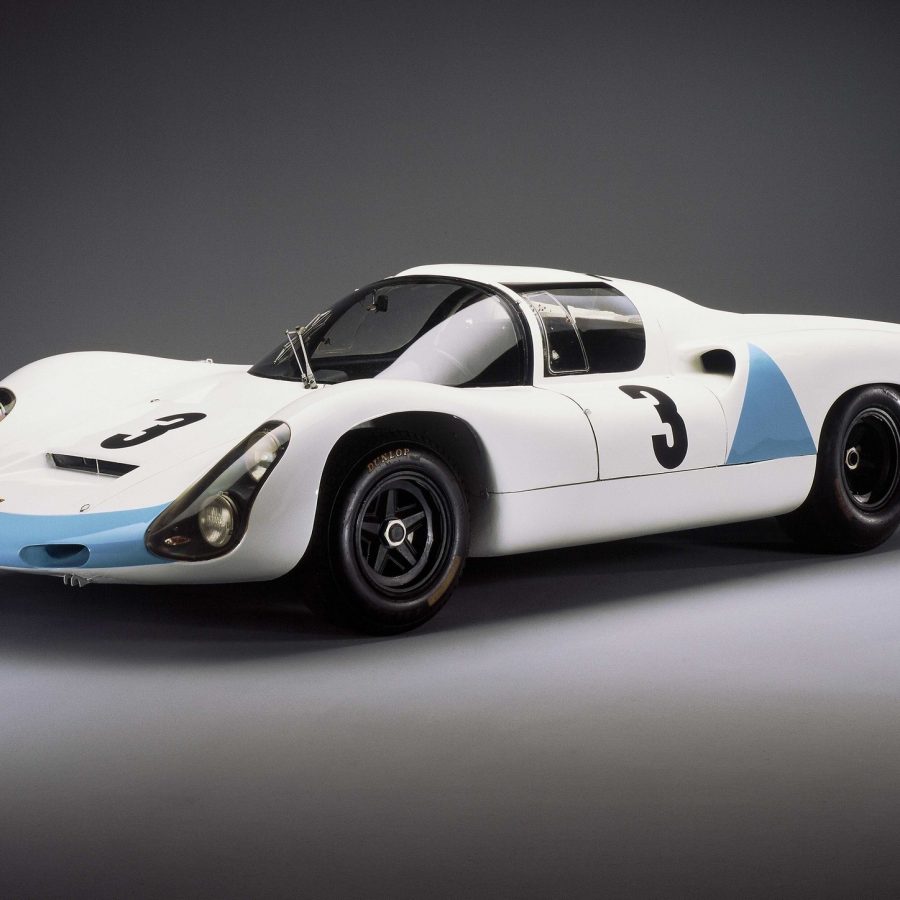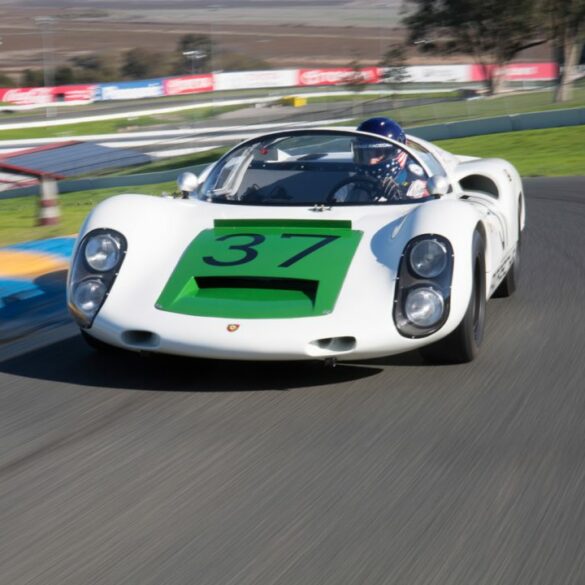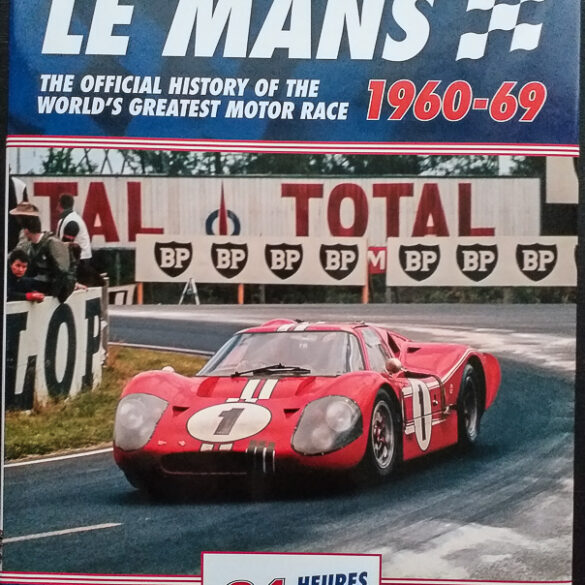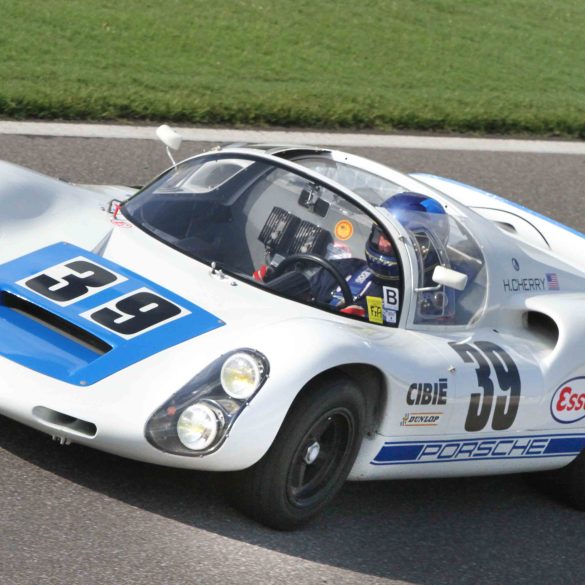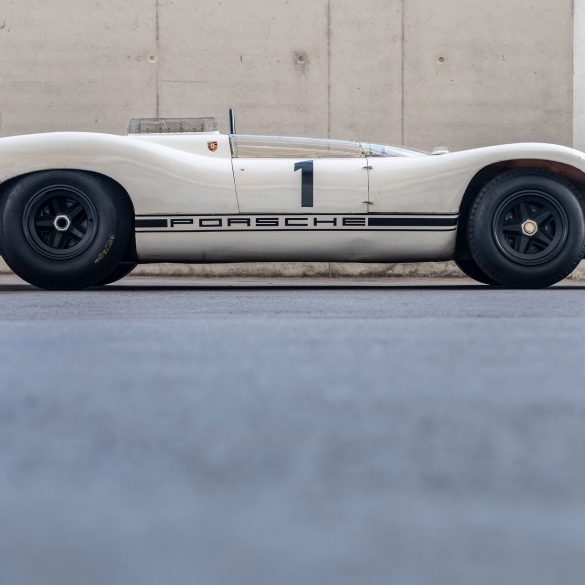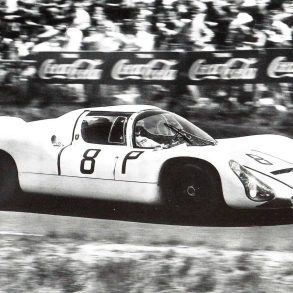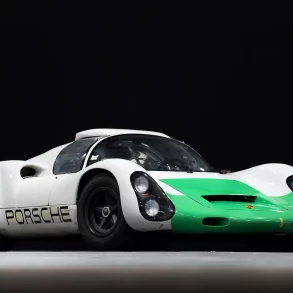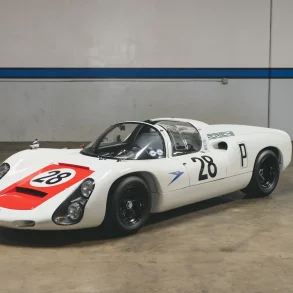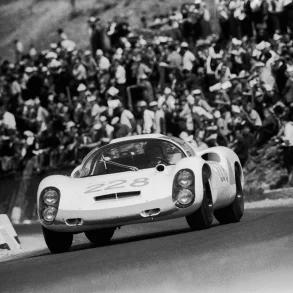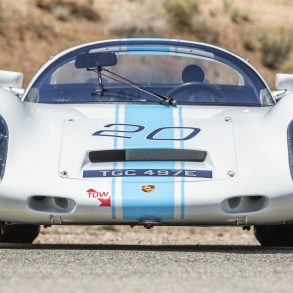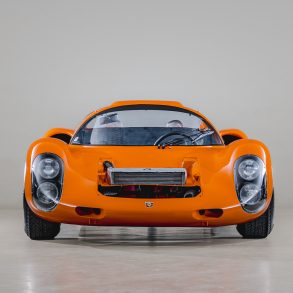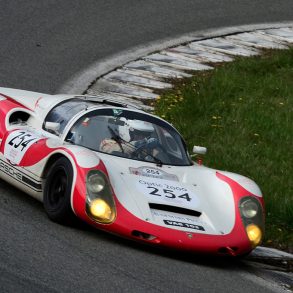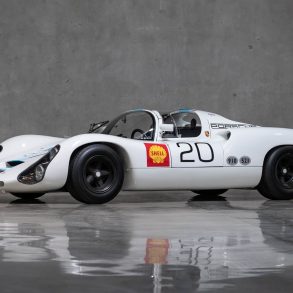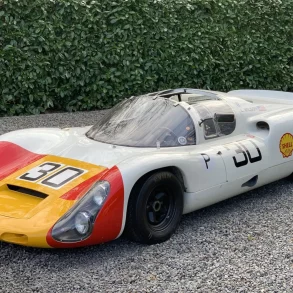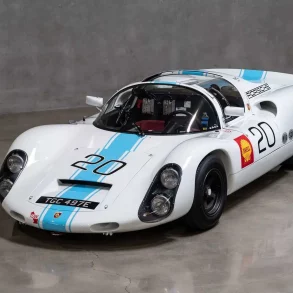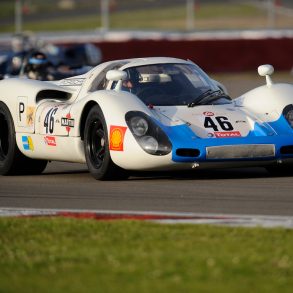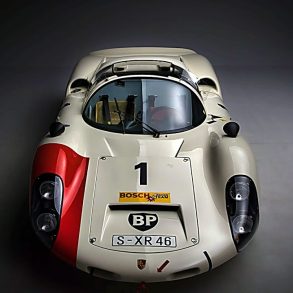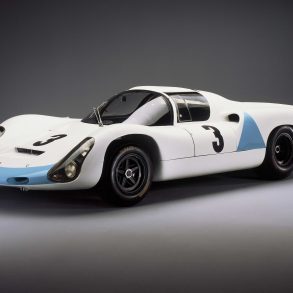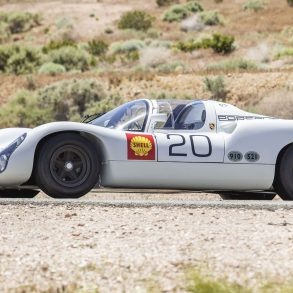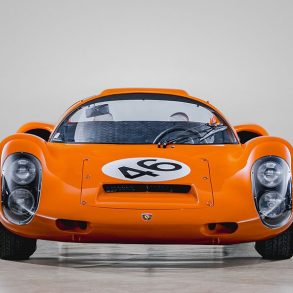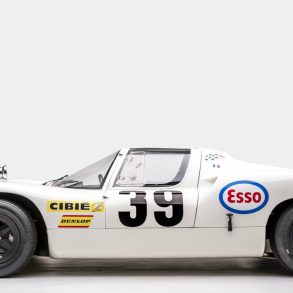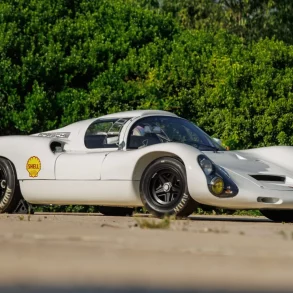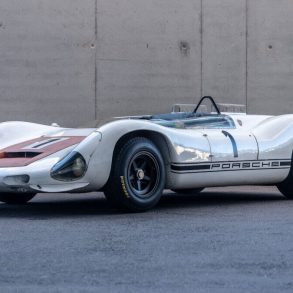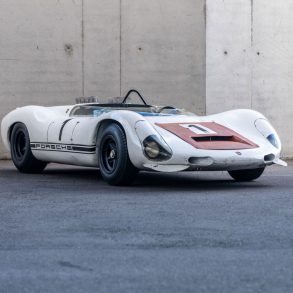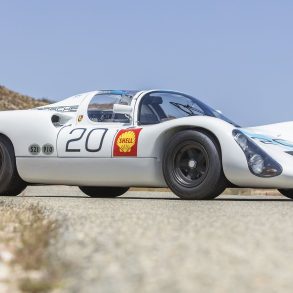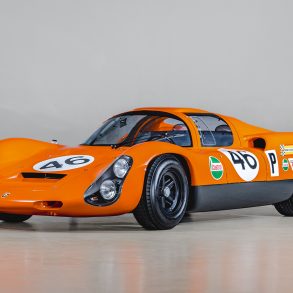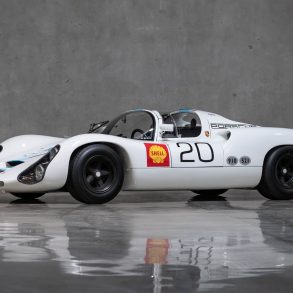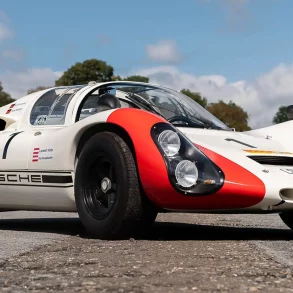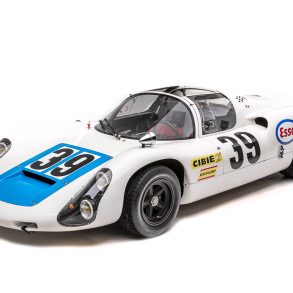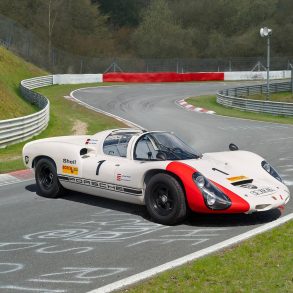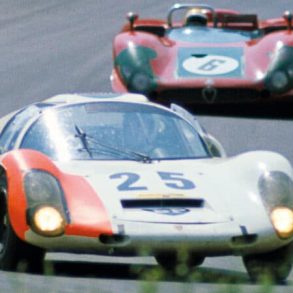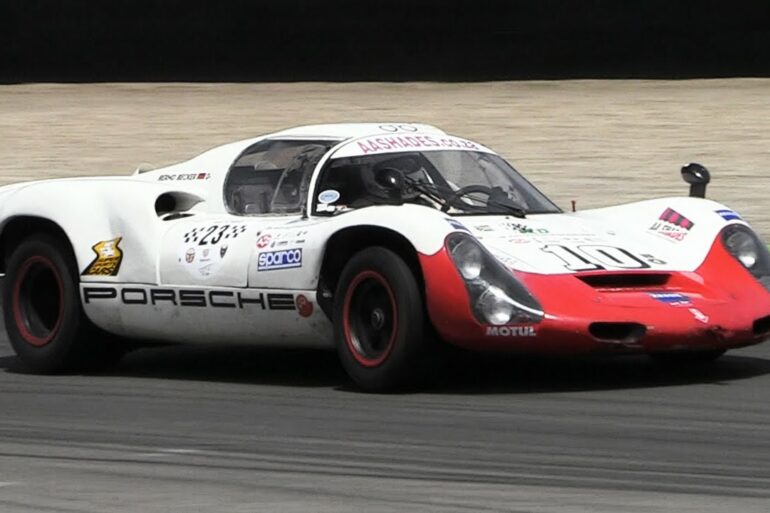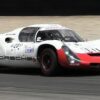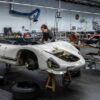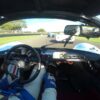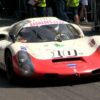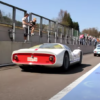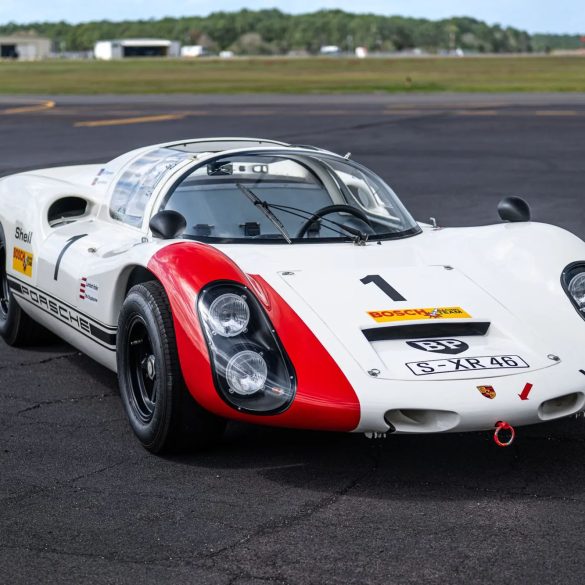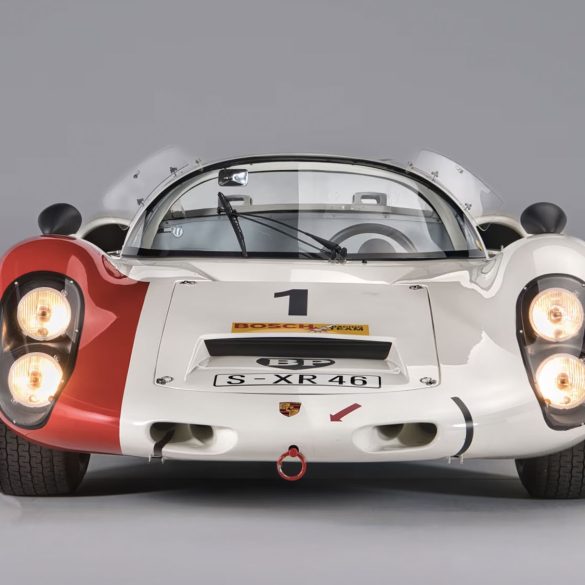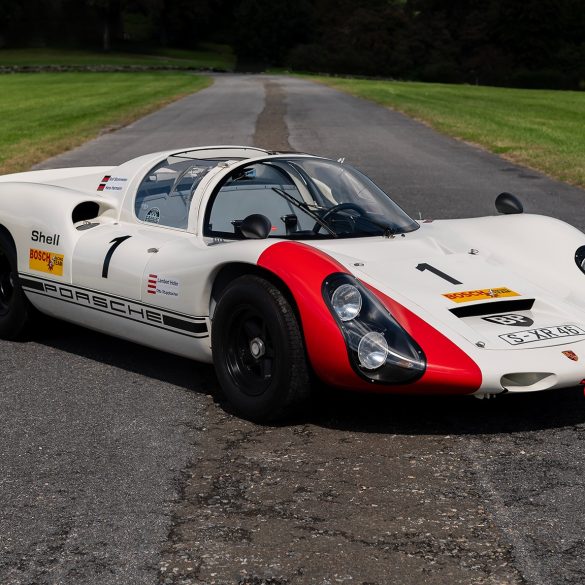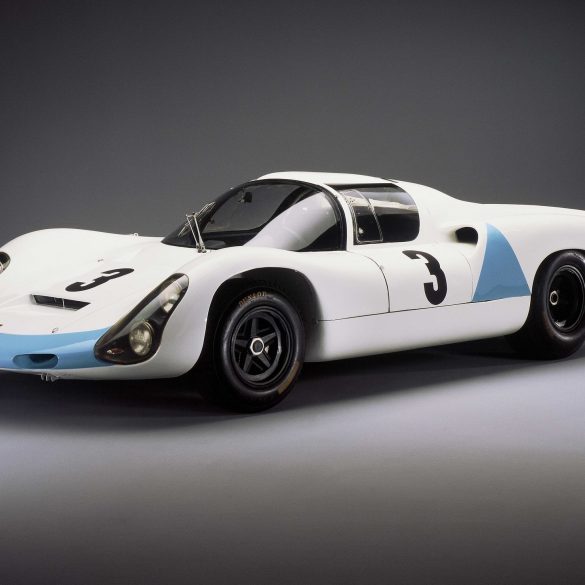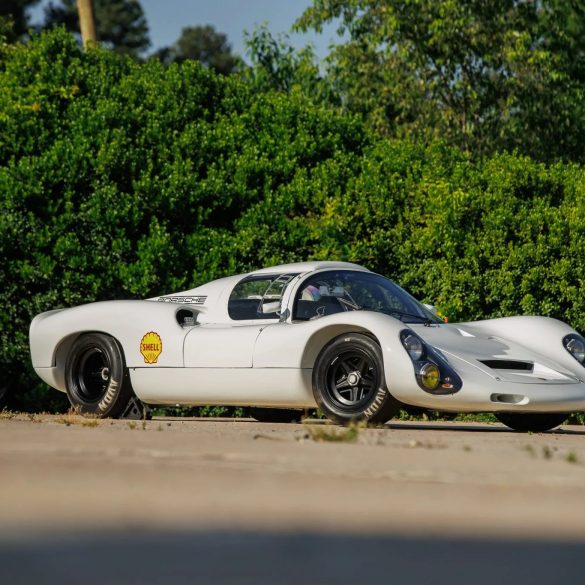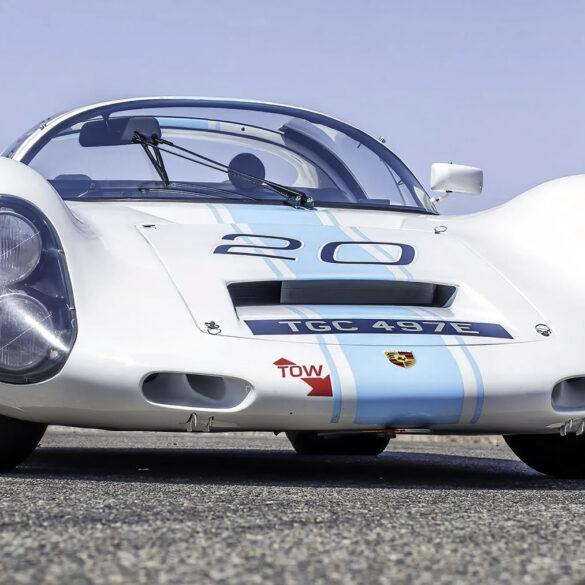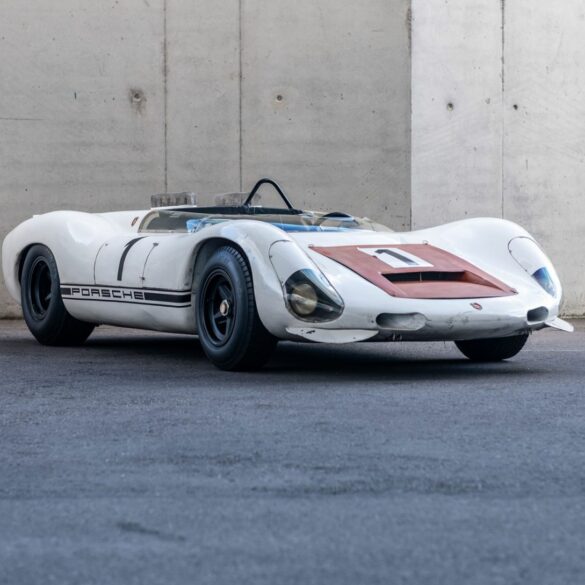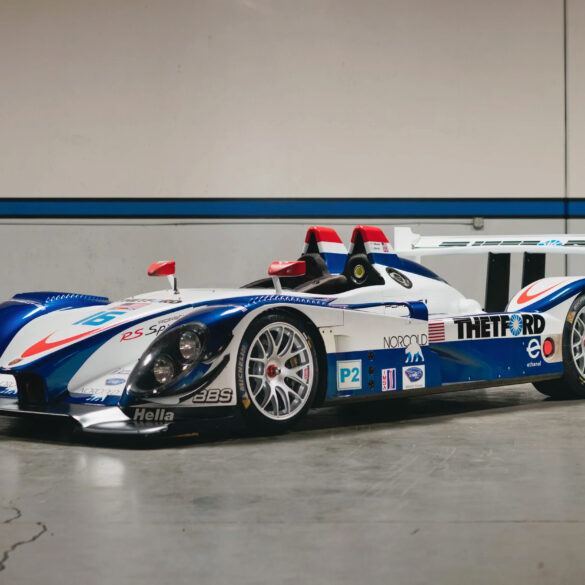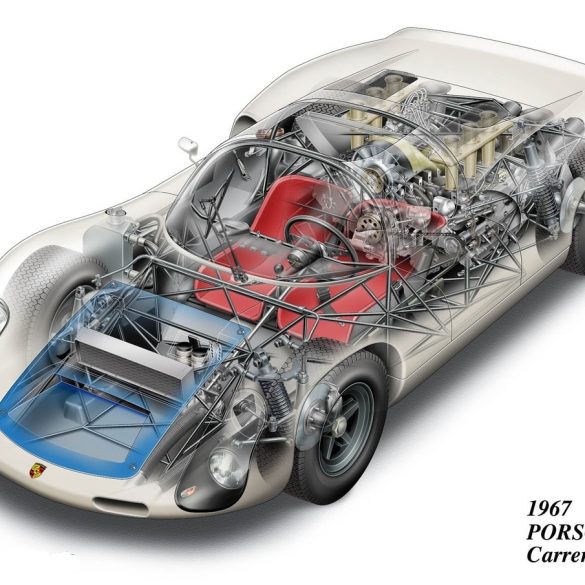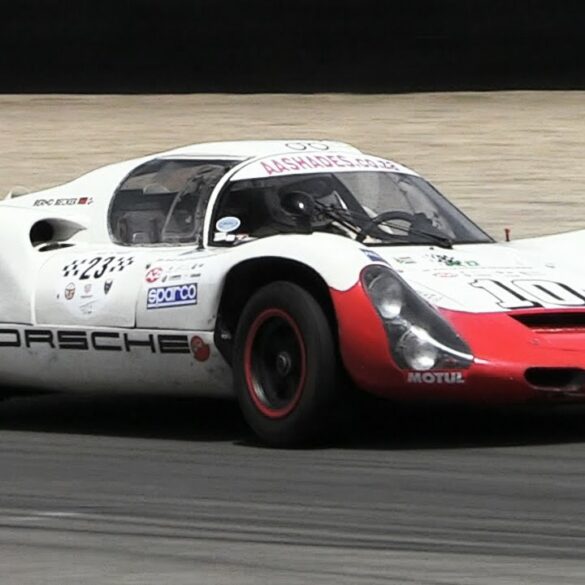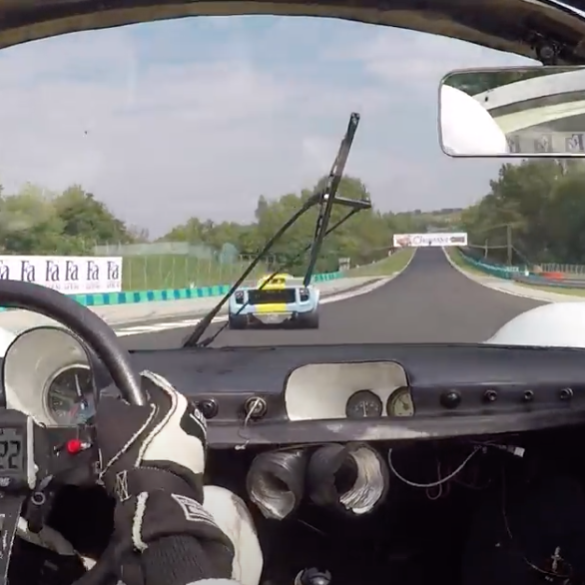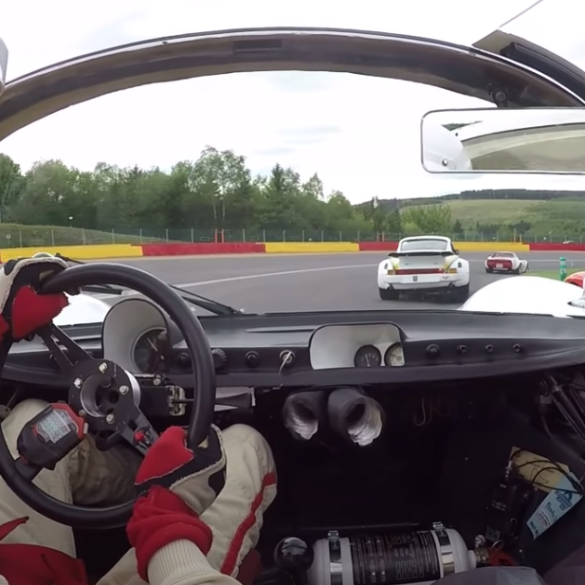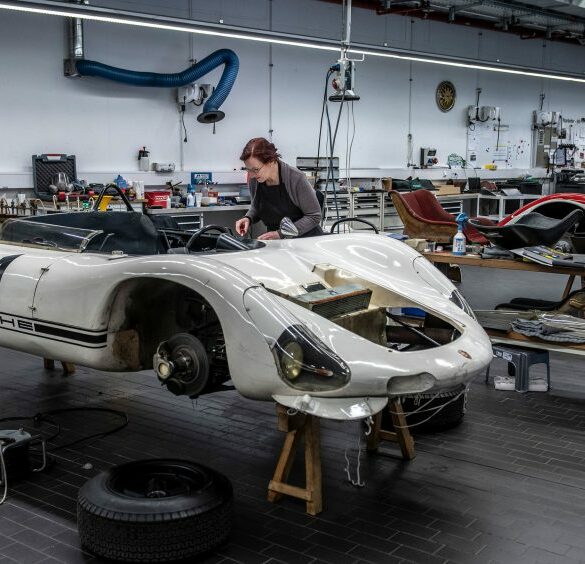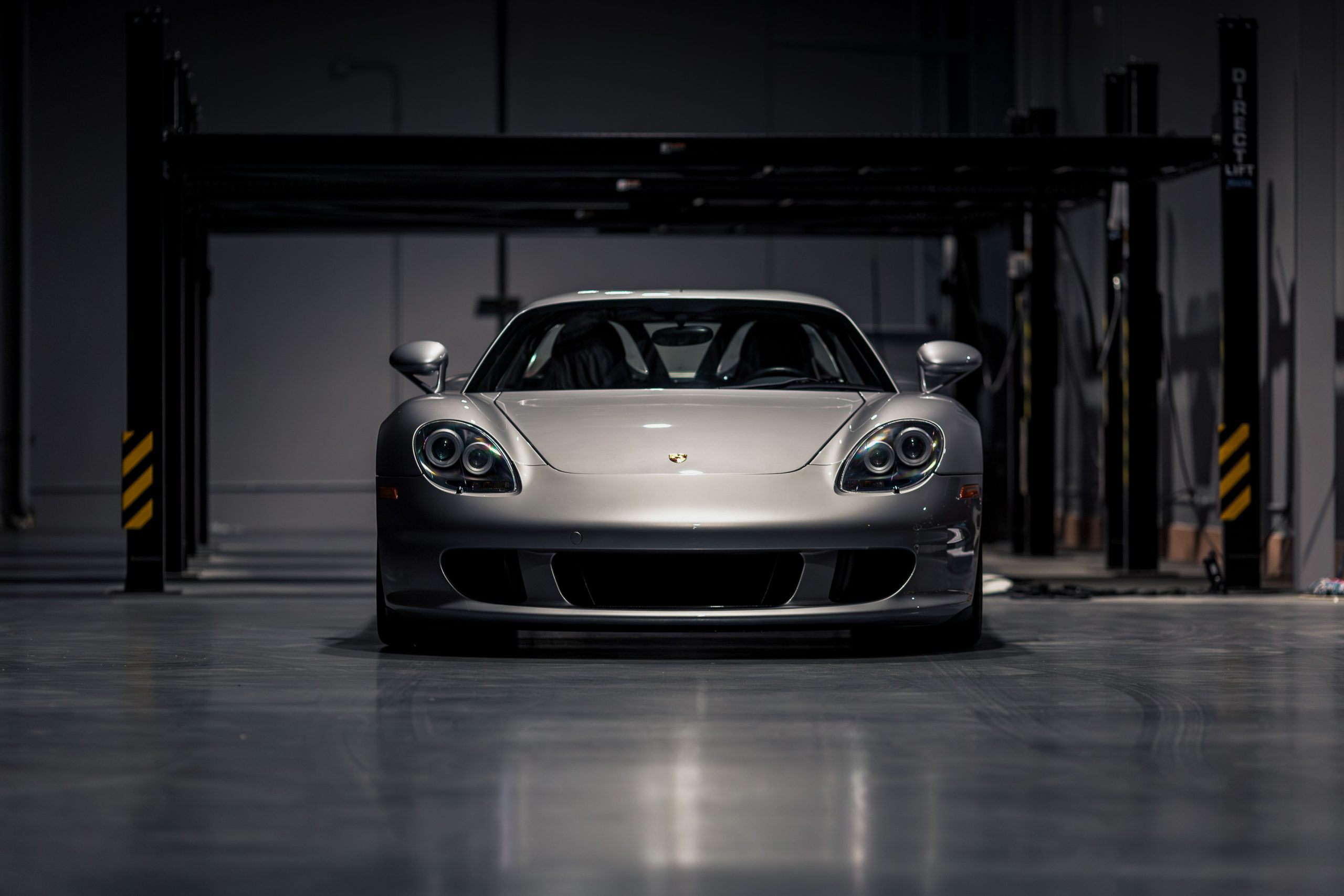Porsche 910 - The Ultimate Guide
Lightweight. Agile. Race-bred.
Model Guides / Featured Stories / Pictures & Videos / FAQs / News & Updates
Porsche 910 Basics
Manufacturer: Porsche
Production Years: 1966-1967
Production: 29 units
Body style: 2-door coupe, 2-door roadster (Bergspyder)
Layout: Rear mid-engine, RWD
Engines: 6-cylinder boxer (four-stroke), 8-cylinder boxer (four-stroke)
Predecessor: Porsche 906
Successor: Porsche 907
The Porsche 910, produced between 1966 and 1967, played a pivotal role in Porsche’s relentless quest for motorsport dominance during the 1960s. Building upon the successes of the 906, the 910 refined Porsche’s mid-engine prototype formula and solidified the brand’s reputation for precision engineering, lightweight construction, and exceptional handling. Despite its short production run, the 910 achieved remarkable success, competing against some of the greatest race cars of its era in endurance races, hill climbs, and circuit events.
Origins and Development
The Porsche 910 was designed to address the limitations of the 906 Carrera 6 and provide a competitive edge against formidable rivals like Ferrari and Ford. Headed by Ferdinand Piëch, Porsche’s development team focused on refining aerodynamics, improving suspension geometry, and reducing weight. The 910 utilized a tubular steel spaceframe chassis with a sleek fiberglass body, continuing Porsche’s tradition of lightweight design.
One of the key innovations of the 910 was its use of 13-inch Formula 1-style wheels instead of the 15-inch wheels used on the 906. This change allowed for lower-profile tires, improving handling and reducing weight. The 910 was also more compact and aerodynamically efficient, with a low-slung, curvaceous body designed to minimize drag and enhance stability at high speeds.
The Porsche 910 was powered by a range of engines, including the 2.0-liter flat-six and the more powerful 2.2-liter flat-eight engine, producing between 200 and 270 horsepower. Paired with a 5-speed manual transmission, the 910’s mid-engine layout provided balanced weight distribution and exceptional cornering ability.
Racing Success
The Porsche 910 quickly proved itself on the international racing scene, achieving numerous victories in endurance and hill climb events. The car’s debut season in 1966 showcased its potential, but it was in 1967 that the 910 truly came into its own.
At the 1967 24 Hours of Le Mans, the 910 finished an impressive fifth overall and first in its class. This performance demonstrated the car’s reliability and efficiency in one of the most grueling endurance races in the world. The same year, the 910 achieved its most significant triumphs at the 1000 km of Nürburgring and the Targa Florio, two of the most challenging and prestigious races of the era.
The 1967 1000 km of Nürburgring saw Porsche dominate the competition, with the 910 securing a 1-2-3 finish. Drivers Udo Schütz and Joe Buzzetta piloted their 910 to victory, highlighting the car’s exceptional handling and durability on the demanding Nordschleife circuit. The 910’s ability to handle the twisting, undulating roads of the Targa Florio was equally impressive, with Umberto Maglioli and Udo Schütz taking the top spot.
In addition to circuit racing, the 910 excelled in European hill climb competitions, where its lightweight design and nimble handling gave it a significant advantage. These successes helped cement Porsche’s reputation as a manufacturer capable of building race cars that thrived in a wide range of motorsport disciplines.
Variants and Innovations
The Porsche 910 was produced in several configurations to suit different types of racing. The most common version featured the 2.0-liter flat-six engine, while a more powerful variant equipped with the 2.2-liter flat-eight engine was used for higher-speed tracks. The car’s low-profile wheels and advanced suspension allowed it to maintain excellent grip and stability, giving it a competitive edge against larger, more powerful rivals.
The 910 also experimented with different body styles, including closed-cockpit coupés for endurance racing and open-cockpit spyders for hill climbs and shorter events. These adaptations demonstrated the car’s versatility and Porsche’s willingness to innovate in pursuit of racing success.
Legacy of the Porsche 910
Though the Porsche 910 had a brief racing career, it left an indelible mark on motorsport history. It served as a bridge between the earlier 906 and the more advanced 907 and 908 prototypes, helping Porsche refine its approach to endurance racing. The lessons learned from the 910’s design and competition success laid the groundwork for the legendary 917, which would go on to dominate the early 1970s.
The 910’s achievements in races like the Nürburgring 1000 km, Targa Florio, and Le Mans solidified Porsche’s reputation for building reliable, agile, and efficient race cars. Its innovative design elements, such as the use of low-profile wheels and advanced aerodynamics, influenced the development of future Porsche race cars.
Today, the Porsche 910 is celebrated by collectors and enthusiasts for its beauty, engineering brilliance, and racing pedigree. It remains a symbol of Porsche’s relentless pursuit of excellence, embodying the spirit of innovation, precision, and performance that continues to define the brand’s motorsport legacy.
Porsche 910 Pictures, Galleries & Wallpapers
The Porsche 910 was never going to win any design awards. It was all about function over form. These picture galleries show you some of those amazing details.
Porsche 910 Videos
Experience the Porsche 910 in these engaging and fun videos.
Porsche 910 FAQs
Find answers to the most frequently asked questions about the iconic Porsche 910, covering its history, specifications, racing legacy, stories and more.
How many Porsche 910 are there?
Only 29 Porsche 910s were built by the factory between 1966 and 1967, making it a rare and highly collectible racing machine. Of these, several were configured for different types of competition—some with 2.0-liter flat-six engines and others with flat-eight engines for higher-powered events.
The 910 was a short-lived but important evolution of the 906, built specifically for factory racing efforts in events like the Targa Florio, Nürburgring 1000km, and Le Mans. Its rarity, race-focused engineering, and strong competition pedigree make it a prized piece of Porsche’s golden era of motorsport.
What is the difference between the Porsche 906 and 910?
The Porsche 906 and Porsche 910 were closely related, both part of Porsche’s mid-1960s push into prototype racing, but the 910 represented a clear evolution from the 906 with several key differences in design, performance, and purpose.
First and foremost, the Porsche 910 was built more exclusively for factory racing, whereas the 906 was also intended for privateers and even had road-legal versions. The 910 dropped any pretense of being street-legal and focused purely on track performance. One of the most visible changes was the shift in wheel and tire setup: the 906 used five-lug wheels similar to road cars, while the 910 featured center-lock wheels with Formula One-style tires, allowing for faster pit stops and better grip.
Chassis and suspension were refined on the 910 as well. Although it retained the same basic tubular spaceframe as the 906, the 910 had improved geometry and handling, making it more agile and better suited for tight, technical circuits like the Targa Florio and the Nürburgring Nordschleife. It was also slightly shorter and lower than the 906, giving it a more compact and aggressive stance.
In terms of engines, both cars typically ran 2.0-liter flat-six engines, but the 910 was also available with the more powerful 2.2-liter flat-eight, producing up to 275 horsepower, giving it a performance edge in higher-speed events. The 910 was lighter overall and more focused, enabling it to dominate races in its class.
In summary, the Porsche 910 was a more specialized, race-focused evolution of the 906—faster, more agile, and more refined for factory-backed motorsport. It marked another step in Porsche’s rapid ascent through the world of endurance racing and laid the groundwork for future prototype legends like the 907, 908, and 917.
What is the price of a Porsche 910 today?
The price of a Porsche 910 today typically ranges between $2.5 million and $4 million, depending on factors like originality, condition, engine configuration (flat-six or flat-eight), and racing history.
Because only 29 examples were built between 1966 and 1967, and most were factory team cars or purpose-built for elite motorsport events, the 910 is incredibly rare and highly prized by collectors. Cars with documented participation in iconic races like the Targa Florio, Nürburgring 1000km, or Le Mans often command premium prices at auction or in private sales.
Its significance in Porsche’s racing evolution and its competitive edge over rivals of the era make the 910 a true gem in the vintage prototype world.
What kind of horsepower did the Porsche 910 have?
The Porsche 910 came with two main engine configurations, both delivering impressive power for its lightweight frame:
The most common version was equipped with a 2.0-liter flat-six engine, similar to the one used in the 906, producing around 200 to 220 horsepower. This engine was renowned for its reliability and high-revving nature, making it ideal for twisty endurance circuits like the Nürburgring and Targa Florio.
Some 910s, especially those built for faster tracks or factory-backed entries, were fitted with a 2.2-liter flat-eight engine (derived from Porsche’s Formula 1 program). These engines produced up to 275 horsepower, giving the 910 significantly more punch on high-speed sections and long straights.
Thanks to its low weight—around 1,320 pounds (600 kg)—even the 200+ hp flat-six made the 910 a fierce competitor. Combined with its aerodynamic body and mid-engine layout, the 910 offered exceptional performance and handling that often outclassed larger, more powerful rivals.
What kind of racing success did the Porsche 910 have?
The Porsche 910 enjoyed notable racing success during its brief but impactful career in 1966 and 1967, further cementing Porsche’s rising dominance in endurance racing. Designed specifically for factory-backed efforts, the 910 was optimized for twisty, technical circuits and medium-distance events, where its lightweight construction, superior handling, and efficient flat-six and flat-eight engines gave it a major competitive edge.
One of its most impressive achievements came at the 1967 Targa Florio, where Porsche fielded a dominant team of 910s and secured 1st, 2nd, and 3rd place overall, completely sweeping the podium. The car's agility and durability made it ideal for the narrow, mountainous Sicilian roads, and this race became one of the 910’s most iconic victories.
In the same year, the 910 also took 1st overall at the Nürburgring 1000km, another extremely challenging and prestigious endurance race. On this notoriously demanding circuit, the 910's balance and control helped Porsche secure a commanding win against strong competition from Ferrari and Ford. The 910 also achieved success in the European Hill Climb Championship, where its lightweight design and sharp handling made it a favorite among top drivers.
Though its racing life was relatively short—soon to be succeeded by the more advanced Porsche 907—the 910 proved to be a formidable weapon in Porsche’s arsenal. It delivered multiple wins, showcased Porsche’s engineering progress, and played a crucial role in the brand’s ascent toward prototype racing greatness and eventual domination at Le Mans and beyond.
What was so special about the Porsche 910?
The Porsche 910 was special because it represented a bold leap forward in Porsche’s motorsport development—a factory-engineered, purpose-built race car that perfectly embodied the brand’s ethos of lightweight design, technical innovation, and precision performance.
Unlike its predecessor, the 906, which was partly aimed at privateer racers and road-legal versions, the 910 was built exclusively for factory racing. It featured several key upgrades that made it a more serious contender on the world stage. Most notably, it introduced center-lock wheels and Formula One-style tires, allowing for faster pit stops and improved grip—critical in endurance racing. It also had a shorter, stiffer chassis, refined aerodynamics, and further weight reduction, tipping the scales at around 600 kg (1,320 lbs).
The 910’s engine versatility added to its legend. It was typically powered by a 2.0-liter flat-six engine producing 200–220 horsepower, but Porsche also equipped certain versions with a 2.2-liter flat-eight engine capable of 275 horsepower, giving the car serious speed on high-speed tracks. This adaptability made it effective on a wide range of circuits, from tight and technical hill climbs to fast endurance tracks.
In racing, the 910 made an immediate impact, dominating events like the 1967 Targa Florio and the Nürburgring 1000km, where its agility and reliability proved unbeatable. Its success wasn’t just about winning—it symbolized a shift in Porsche’s strategy: building dedicated prototypes capable of challenging and beating the best from Ferrari and Ford. The 910 wasn’t the longest-running Porsche racer, but it was a vital stepping stone that helped propel the brand toward legendary status in endurance racing.
Join Our Porsche Community
Sign up for our weekly Porsche newsletter. The latest Porsche news, rumors, reviews and more delivered to your inbox. Cool Porsche stuff perfect for the flat-six obsessed.


